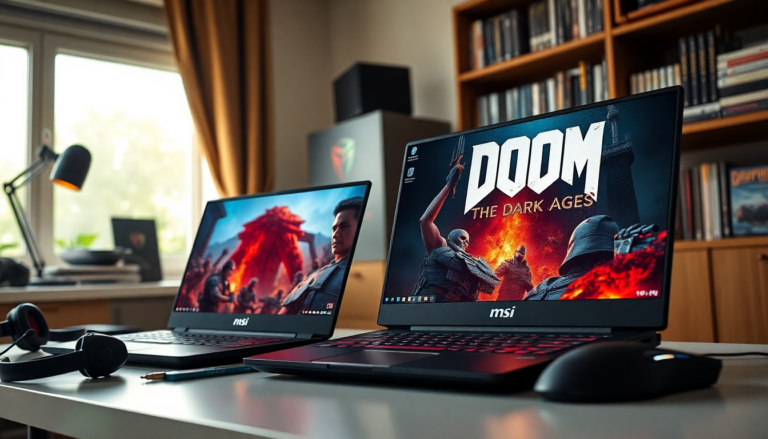Argomenti trattati
When it comes to gaming, the stakes are high, and gamers are always on the lookout for the next big performance leap. Recently, I had the thrilling opportunity to dive into the brutal world of Doom: The Dark Ages using two impressive gaming laptops: the MSI Stealth A16 AI+ with an RTX 5070 Ti and the Asus ROG Zephyrus G16 boasting an RTX 5080. The combination of cutting-edge technology and the intense gameplay of Doom makes for an exhilarating experience, but just how well do these laptops hold up under fire?
Specifications that matter
Let’s take a closer look at what makes these machines tick. The MSI Stealth A16 AI+ features a robust AMD Ryzen 9 HX 370 processor, paired with a powerful Nvidia GeForce RTX 5070 Ti and 32GB of DDR5 RAM. Meanwhile, the ROG Zephyrus G16, equipped with an Intel Core Ultra 9 285H and an RTX 5080, shares the same RAM but comes with a slightly higher price tag. With both laptops boasting 16-inch OLED displays at a stunning 240Hz refresh rate, they promise a visually rich and smooth gaming experience.
Interestingly, as I navigated through the hellscape of Doom, I felt a subtle tension between the two contenders. Despite the Zephyrus G16’s higher specs, the performance difference wasn’t as stark as one might expect. I mean, isn’t it wild when you think that a laptop priced at $3,599 might not outshine its $2,899 counterpart by as much as you’d hope?
Gameplay experience: A brutal battle
As I launched into Doom: The Dark Ages, I was greeted by an avalanche of chaotic action. The game’s visuals were nothing short of mesmerizing. With ray tracing and DLSS 4 in play, the graphics were brutally beautiful, almost hypnotic in their intensity. I remember the sheer thrill of slicing through enemies and watching the sparks fly, a testament to the graphics capabilities of these laptops.
Turning off DLSS, the MSI Stealth A16 AI+ achieved an impressive average of 87 FPS at 1600p. But with DLSS multi-frame generation activated, that number skyrocketed to a staggering 207 FPS. The ROG Zephyrus G16, on the other hand, started at 95 FPS without DLSS and reached an eye-popping 221 FPS once the feature was turned on. It’s remarkable how both machines handled the game’s ultra-nightmare settings; I found myself questioning the necessity of spending that extra cash for the Zephyrus G16.
Performance comparisons: Numbers that speak
Let’s break it down a bit. The performance numbers reveal a fascinating story. Both laptops delivered high frame rates, but the differences in performance were surprisingly minimal. For a single-player experience, having anything above 60 FPS is generally fantastic, and both systems exceeded that by a long shot. However, the fact that the RTX 5070 Ti could keep pace with the RTX 5080 was something I hadn’t anticipated. It made me wonder whether the marginal gains were worth the steep price increase.
As I played, the MSI model occasionally made more noise than I would have liked, a point of frustration when you’re trying to immerse yourself in a fiery battle against demons. Yet, the smooth performance and stunning visuals more than made up for it, leaving me exhilarated after each gaming session.
Final thoughts on the gaming experience
In the end, it’s evident that both the MSI Stealth A16 AI+ and the Asus ROG Zephyrus G16 are formidable gaming laptops capable of delivering an incredible experience in Doom: The Dark Ages. While the Zephyrus G16 slightly edges out in terms of performance, the value offered by the MSI machine cannot be overlooked. As someone who has spent countless hours navigating the gaming landscape, I find it hard to justify the additional cost for what may be only marginally better performance.
As I reflect on my experiences with both machines, one thing is clear: the RTX 50 series is paving the way for a new era of gaming laptops. Whether you opt for the slightly cheaper MSI model or the pricier Asus version, you’re in for a treat. And hey, when it comes to obliterating demons in a visually stunning environment, who wouldn’t want the best possible experience?

